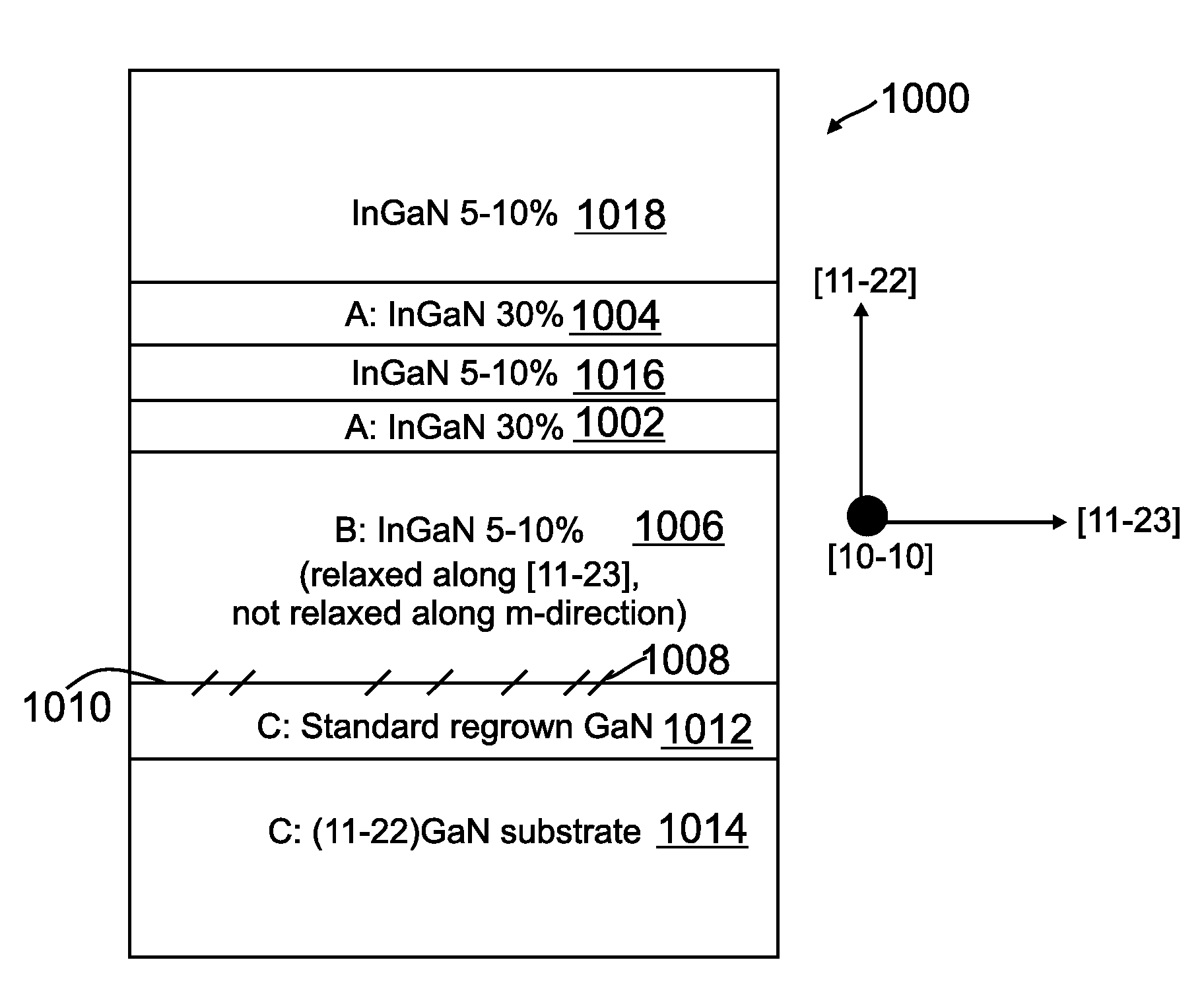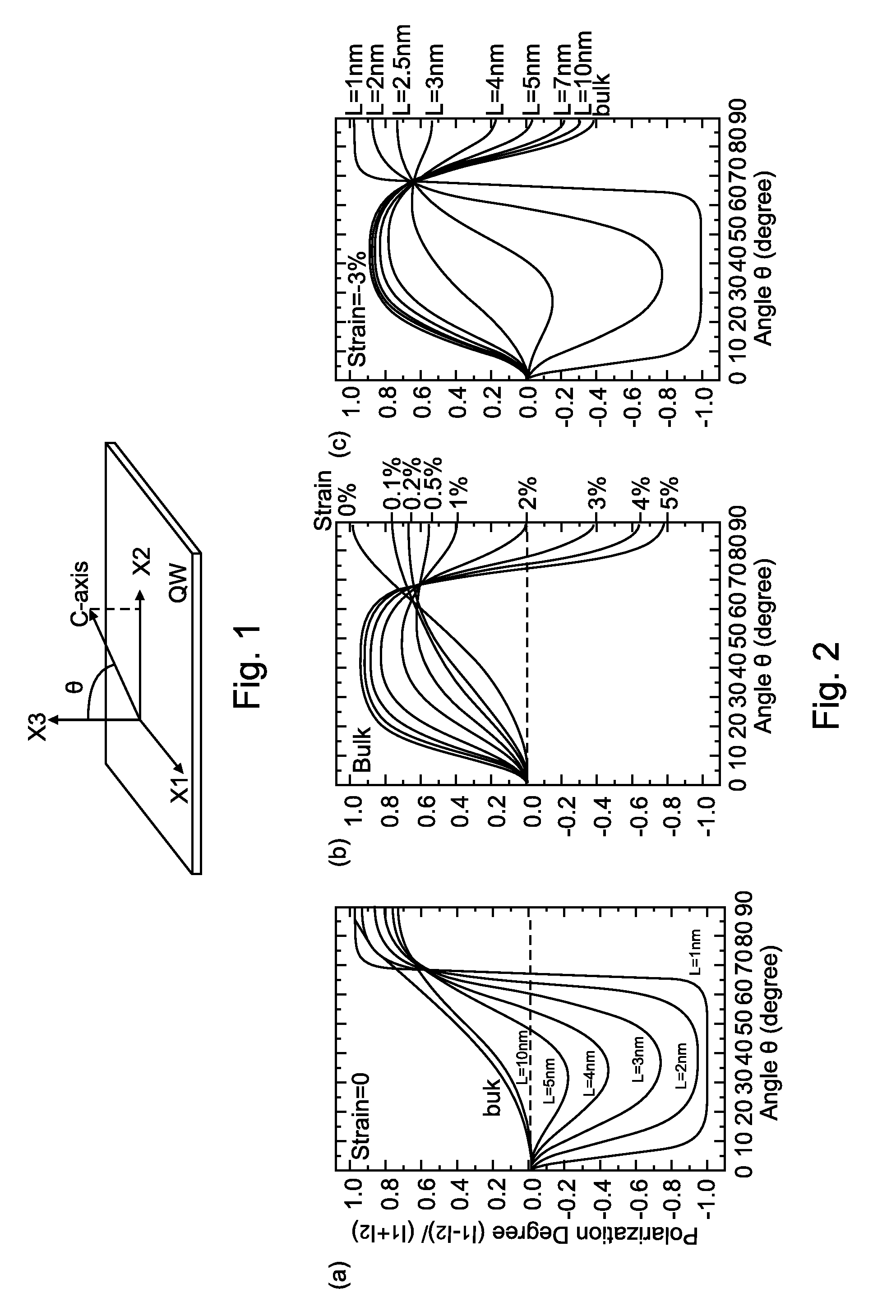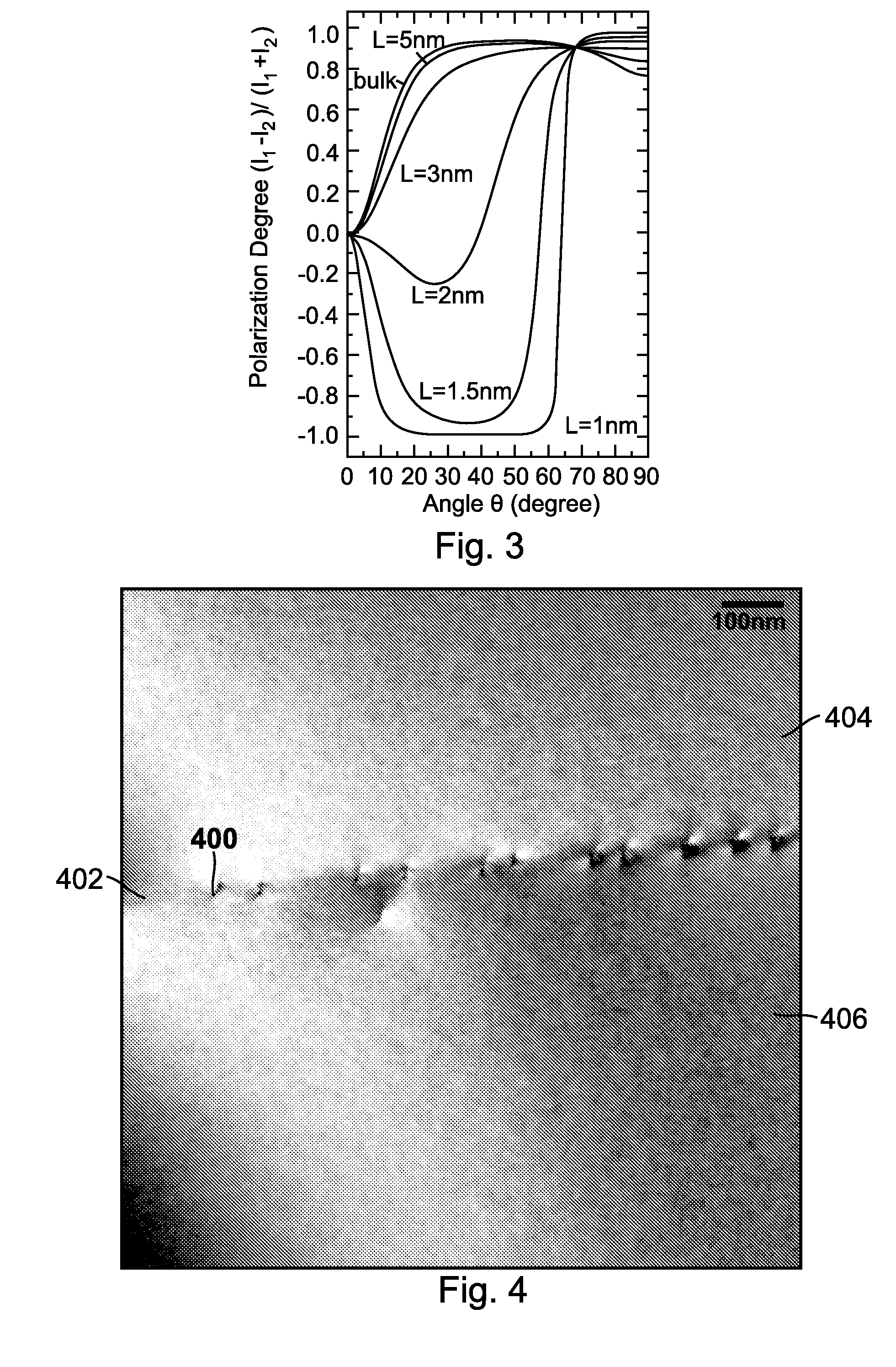Anisotropic strain control in semipolar nitride quantum wells by partially or fully relaxed aluminum indium gallium nitride layers with misfit dislocations
a technology of misfit dislocation and anisotropic strain, which is applied in the field of optical devices, can solve problems such as poor device performance, and achieve the effects of poor device performance, high device performance/efficiency, and enabling strain control in the device layer
- Summary
- Abstract
- Description
- Claims
- Application Information
AI Technical Summary
Benefits of technology
Problems solved by technology
Method used
Image
Examples
Embodiment Construction
[0051]In the following description of the preferred embodiment, reference is made to the accompanying drawings which form a part hereof, and in which is shown by way of illustration a specific embodiment in which the invention may be practiced. It is to be understood that other embodiments may be utilized and structural changes may be made without departing from the scope of the present invention.
[0052]Overview
[0053]An epitaxial layer (X) grown on another layer (Y), wherein layer Y could itself be epitaxial or else a substrate, can be coherent, or partially relaxed, or fully relaxed, with respect to Y. For the case of coherent growth, the in-plane lattice constant(s) of X are constrained to be the same as the underlying layer Y. If X is fully relaxed, then the lattice constants of X assume their natural (i.e. in the absence of any strain) value. If X is neither coherent nor fully relaxed with respect to Y, then it is considered to be partially relaxed. In some cases, the substrate m...
PUM
 Login to View More
Login to View More Abstract
Description
Claims
Application Information
 Login to View More
Login to View More - R&D
- Intellectual Property
- Life Sciences
- Materials
- Tech Scout
- Unparalleled Data Quality
- Higher Quality Content
- 60% Fewer Hallucinations
Browse by: Latest US Patents, China's latest patents, Technical Efficacy Thesaurus, Application Domain, Technology Topic, Popular Technical Reports.
© 2025 PatSnap. All rights reserved.Legal|Privacy policy|Modern Slavery Act Transparency Statement|Sitemap|About US| Contact US: help@patsnap.com



